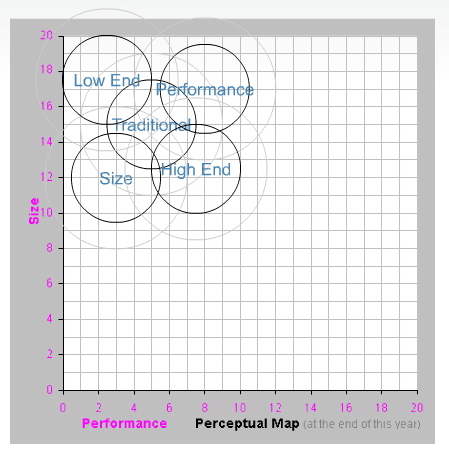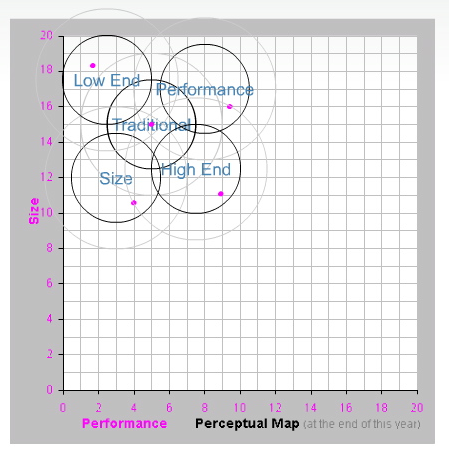Let’s start with your customers, who fall into different market segments. Some customers want proven products, while others are biased towards miniaturization or high speed. Segments are named for their customers' top concern and are called:
- TRADITIONAL
- LOW END
- HIGH END
- PERFORMANCE
- SIZE
These segments can be visualized using a perceptual map, which plots two design attributes, the sensor’s size and its performance. The circles represent groups of customers. They cluster near the design attributes they want. These clusters are called Market Segments.

Traditional customers want tried and true technology of moderate size and performance. Low End customers want low prices and are willing to sacrifice miniaturization and performance. Market Segments 6 High End customers want products that are fast performing and small in size. They are willing to pay high prices, Performance customers want performance and are willing to sacrifice miniaturization. Size customers want small products and are willing to sacrifice performance.

In each segment, customers fall within a set of circles: the fine cut and the rough cut. Customers want products that are inside the fine cut, represented by the inner circles. Only desperate or eccentric customers buy products with performance and size outside the fine cut. Beyond the rough cut, represented by the outer circles, products fail customer specifications entirely -no customer will buy them.
Each fine cut circle has a point where demand is highest. This point is called the ideal spot and it has the highest concentration of buyers.
The high technology segments, High End, Performance and Size, prefer products near the leading edge of their fine cut circles. These customers want the latest technology-sensors that are better performing and/or smaller in size.
Traditional customers prefer products in the exact center of the circle. Low End customers want older technology -they don't want sensors that will require them to change their manufacturing system-therefore their ideal spot is near the upper left edge of the circle.

As time goes by, customers want smaller, more powerful sensors. This causes the , the segments to move, or drift, across the map. Ideal spots drift with the segment. The segments drift at different speeds and slightly different directions, therefore, over the years they separate, overlapping less and less.